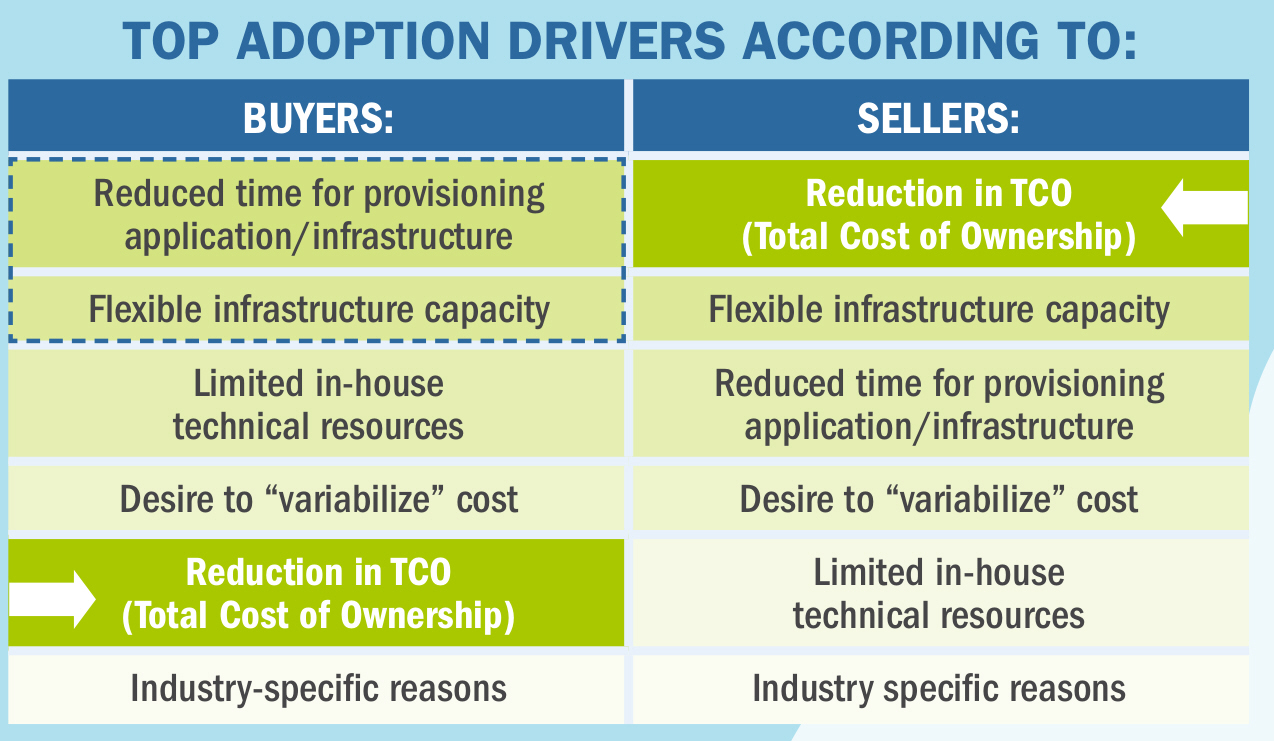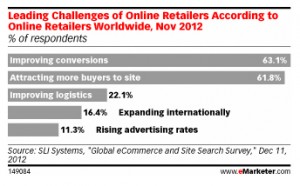Of all the many areas affecting software companies in 2013, ecommerce saw a flurry of activity in the innovation and growth of cloud adoption and the subscription economy, mobile ecommerce, localization and the never-ending quest for conversion rate optimization.
Cloud Adoption & Subscriptions

More and more organizations want to adopt SaaS-products and cloud technology. Their primary reason is not to reduce costs, but rather, to enhance their business processes. This face should be of major interest for B2B software makers, who must ask the question of whether selling a cloud-based product is right for them. It also means looking into the possibility of adopting new models for capturing payments like subscription billing, or other incremental revenue models.
However, implementing a new subscription billing comes with its own difficulties. Subscriptions create a consistent and predictable cash flow, but they also create a number of challenges in areas like revenue recognition, offline payments, customer acquisition, monetization, and customer attrition. Other payment models like usage based billing and the selling of virtual goods can also be successful for monetizing SaaS products.
Mobile Ecommerce
Mobile as an ecommerce channel certainly proved its chops this holiday season. While on-premise downloadable software isn’t going the way of the dodo quite yet, “anytime, anywhere, on any device” is an important key to the present and future of e-commerce. This is true for both B2C and B2B customers, with B2B mobile users to not merely double or triple, but to grow twelve-fold by 2016. All in all, mobile will play a big part in marketing and sales as consumers and enterprise users increasingly rely on their ability to work at the office, at home and even while riding on the train.
Ultimately, software companies must put effort into a mobile strategy for three distinct areas: marketing to mobile customers, mobilizing their own organization, and creating mobile versions of their products and service.
Localization
Another important trend in ecommerce is localization, which includes things that go beyond simply translating the text of your website into another language. It involves understanding the different needs customers have in different regions. Localization requires using traffic and purchasing data to create familiar shopping experiences for shoppers in different countries. Similarly, it means complying with regional privacy and tax laws that differ from the laws in your home country. Additionally, when it comes to localizing for affiliates, it is worth the effort of targeting useful markets for your business as well as researching your competition in those markets.
As our global village expands into developing regions, proper communication will be key for success in selling to new markets, and proper communication will depend on understanding the specific needs of your target market.
Conversion Rate Optimization

Research from eMarketer notes that conversion optimization is the number one priority for online retailers. But conversion rates can be a tricky thing to improve. Firstly, a successful conversion rate will vary depending on the type of conversion you’re after. For example, the rate at which you convert website visitors into free trial users will certainly be greater than the rate at which you convert free users into paying customers. Secondly, your overall conversion rate of paying customers might tell a story of success, but your regional conversion rates might tell a story of missed opportunity. In the end, proper MVT testing is critical to reaching valid conclusions.
Aside from MVT tests, ecommerce companies can invest in user testing or expert consultants. This allows companies to gain objective analysis from unbiased external sources.
A large number of retailers plan on adding “non-product content” for CRO purposes. Non-product content refers to how-to information such as online videos, blog posts and other forms of content marketing as a way to influence consumer buying decisions.
Finally, as CRO expert Tim Ash told us, don’t forget about the in-app experience. According to Tim, “A lot of conversions should be happening because they’re happy and satisfied with the use of your wonderful, intuitive software or package in the first place.”
Keystone
2012 was the year software companies focused on increasing usability in order to increase conversion rates and revenues. This was done by making software available to consumers and businesses on their own terms, through cloud products and mobile sites, and by localizing software and content for different regions.